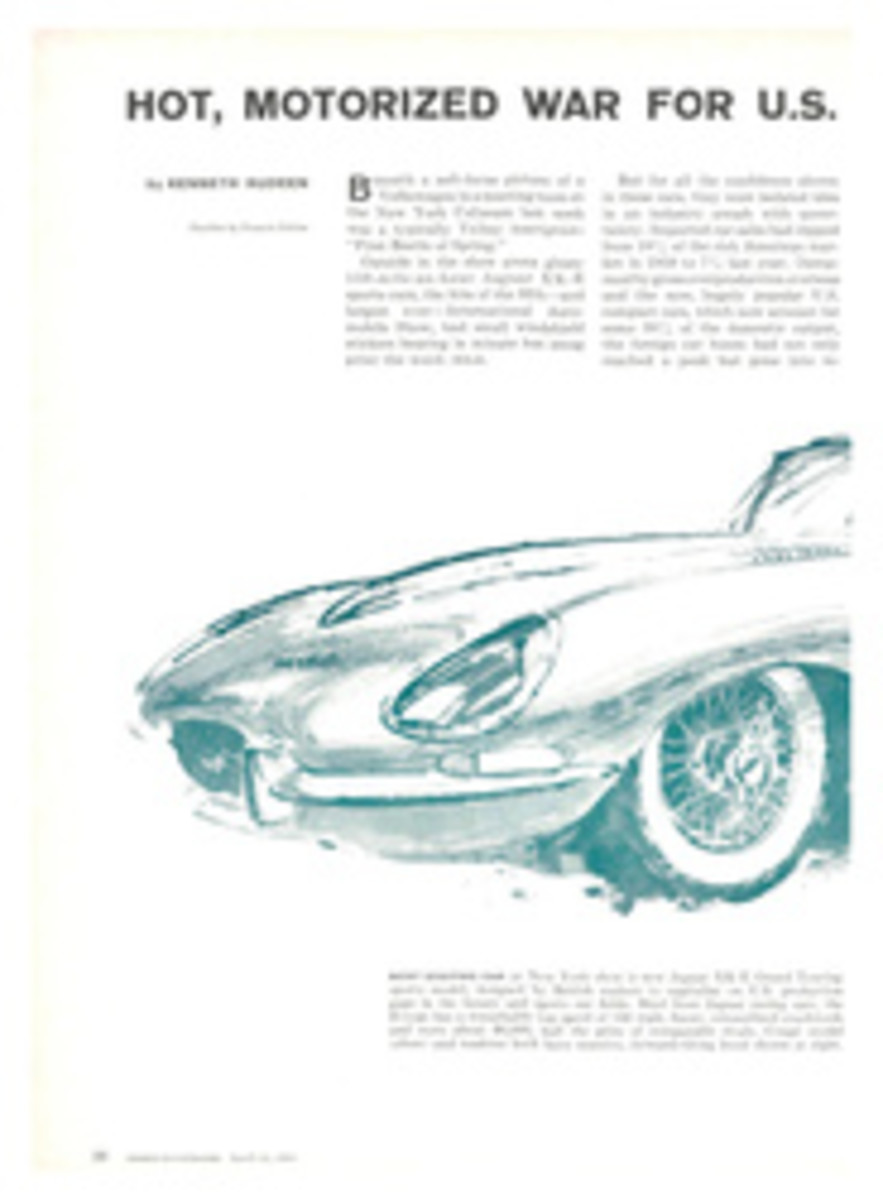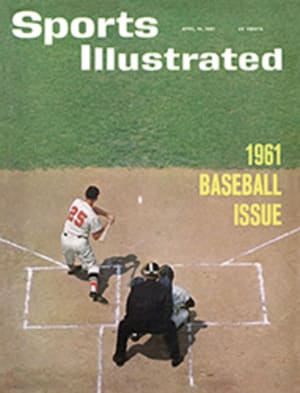
LOS ANGELES DODGERS
ANALYSIS OF THE DODGERS
STRONG POINTS
The Dodgers are rich in talent: depth in both outfield and infield, power hitting, skillful pitching, superb defense. They have live outfielders—Tommy and Willie Davis, Frank Howard, Duke Snider and Wally Moon—who could make any major league squad on the strength of their hitting alone. Howard and Moon leave something to be desired as fielders—Howard for lack of polish, Moon because of a weak arm that he overestimates. But all hit with power, and consistently. The Dodger pitching staff had the best earned run average in the league, fewest earned runs allowed, fewest hits, most strikeouts. The starters—Roger Craig, Don Drysdale, Sandy Koufax, Stan Williams and Johnny Podres—teeter year after year on the edge of greatness. The relief pitchers—Ed Roebuck and Larry Sherry—are excellent. Should Tommy Davis play third and Frank Howard first (instead of singles hitter Norm Larker), the Dodger infield would boast as much power as most outfields do. Maury Wills, a pesky hitter, and Charlie Neal, a strong one, are set at shortstop and second. And they comprise a fine defensive team.
WEAK SPOTS
Truly, the only weak spot on this team is the catching. John Roseboro does not have it, defensively or with the bat. Norm Sherry may have the equipment; he doesn't have the experience. Manager Walter Alston has tried Gil Hodges as a catcher in spring training, and Hodges, a thorough pro, looks good. His bat would be a big help, and his arm, too.
ROOKIES AND NEW FACES
Willie Davis, who in two years in the minors has led his league each season in five offensive categories, seems to be a sure starter for the Dodgers in center field. Willie does everything superbly—run, hit, field and throw. The only other exciting new face is a youngster named Ron Perranoski, who was signed this spring to a Dodger contract after he demonstrated a cool, unruffled demeanor while retiring major league batters.
THE BIG IFS
The biggest if on the Dodger squad is Frank Howard. Howard has almost unlimited power. He also presents a pitcher with an immense strike zone, most of it, up until now, unprotected. He has been guilty of over-striding, has corrected that error. The kind of year Howard has will have a strong influence on the kind of year the Dodgers have.
OUTLOOK
This could be the beginning of a Dodger dynasty to rival that of the Yankees or that of the old Brooklyn Dodgers (circa 1946-56). The talent is there; if it doesn't jell this year, it will next, or next after that.
RUN, RUN, RUN
"A player like Maury Wills can raise the batting average of the man behind him in the lineup 20 or 30 points," said Fresco Thompson. "He can do it by running. Maury stole 50 bases last year. What do you think that does to the pitcher when Maury gets on base? And the catcher? The pitcher can't bear down for worrying about holding Maury on, and the catcher is afraid to call for a curve or a changeup for fear Maury is going down to second. So the guy batting behind Maury gets fast balls, and he knows he'll get them. There's the 20 or 30 points in average."
Gil Hodges is a big man, built like a pro halfback. For the first time since he was a rookie, more than a dozen years ago, he reported to camp worried about sticking with the club. For 11 straight years Hodges never hit less than 20 home runs; last year he hit eight, batted .198. At Dodgertown this spring, he was a worried man.
"I got in a bad habit last season," he said, big hands twisting a first baseman's mitt nervously. "I used to swing like I was trying to hit the outside of the ball—the side across the plate from me. That way I had a wide, extended swing. Somehow I got out of that. I started hitting the side of the ball toward me—popping up, not getting enough bat on the ball. I have been working hard trying to get back the old swing. I hope I got it now. I don't know."
In 1956 Don Newcombe won 27 games for the Dodgers. In 1961 he was at Vero Beach working hard for a job—any kind of pitching job—with the same club. He is a big man, running to fat, and spring training was hard work for him. He was released outright by the Cleveland Indians last year; after that big 1956 season, his talent died out.
"This game's no fun," Newcombe said one day, wiping away the rivulets of sweat coursing down his thick neck. "If I make this team, or another big league team, I'll keep playing. I made $27,000 last year. That's why I'm here. But if I can't stay in the majors, I'll go home.
The face was similar, a little rounder maybe, but the family resemblance was there. The build was different, an inch or so taller, even a little heavier. This young ballplayer, Doug Camilli, is a catcher. His father was a first baseman for the Brooklyn Dodgers. "I remember your dad, Dolph Camilli," people say to him. "He used to hit a lot of home runs. Why, I saw him hit one in Brooklyn that...."
Young Camilli, 24, wants to make the ball club. "I have to do it myself. My dad can't get up there and hit for me. "It's just the pitcher and me, that's all."
Doug learned the game himself. "My dad was on the road a lot, first playing, then coaching or managing. Now he scouts for the Yankees. The Dodgers signed me before my dad went to work for the Yankees."
He barely remembers 1941. "We talked about it a lot, though, my brothers and me." There was a lot to talk about in the Camilli home about 1941. Dolph Camilli hit a lot of home runs, helped win a lot of games and the Dodgers brought a pennant to Brooklyn, the city's first in 21 years.
"There was a lot of excitement around. I remember that," Doug Camilli said.
THE FRONT OFFICE
Strong man of the National League is Dodger President Walter Francis O'Malley. He became Dodgers' club attorney in 1942 (succeeding Wendell Willkie), bought out Branch Rickey in 1950. Hailed in California and howled at in Brooklyn when he took team to L.A., O'Malley appears unaffected by criticism but is extremely proud of Dodgers' acceptance in California and club's on-field record during his reign: five pennants in 10 years. Vice-President Emil J. (Buzzy) Bavasi, 45, a balding DePauw graduate, got first baseball job through friendship with Ford Frick's son, a college classmate. Vice-President Fresco Thompson, a former ballplayer (.298 lifetime BA) and baseball's foremost wit, manages excellent farm system. Another VP, Dick Walsh, is young man with bright front-office future.
THE BALL PARK
Coliseum (92,500 capacity) will be home of the Dodgers one more year. In 1962 team will play in Dodger Stadium at Chavez Ravine (56,000 capacity). For 1961, Dodgers will happily try to fill huge arena a few more times. Short drive from downtown (10 minutes in light traffic, 30 in peak Freeway traffic). State-owned parking for 5,100 cars ($1), private parking for 3,000 more (up to $5), on big days parking on front lawns (50¢ up). Concessions good. Specialties: charbroiled hamburgers 55¢, French-dip sandwiches (roast beef and ham) 75¢. Service is excellent (sometimes 500 vendors). Allied Maintenance warns ushers: "We frown on gratuities. A man caught accepting tips is given a couple of days off to remember." Field change: right center moved in from 394 to 380 feet. No change: that close, close Wall of China screen (251 feet).
[originallink:10504296:43610]
PHOTO
MAURY WILLS
PHOTO
NORM LARKER
PHOTO
TOMMY DAVIS
PHOTO
DON DRYSDALE
ILLUSTRATION
BILL CHARMATZ

